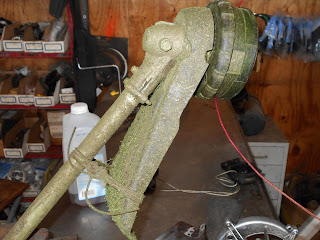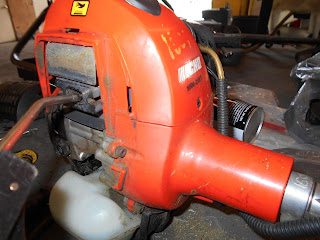My first thought was that someone had replaced the stereo with an aftermarket one and had gone and blown out the left channel. Listening to the music, however, I was able to detect a faint noise coming from the rear door speaker, which told me that the wiring was intact and the left channel from the radio was intact.
So these panels come off with a few screws being removed, but in this case you have to pull up on the door panel slightly before pulling it out. If you do not do this, you will break off the tabs that seat the panel and end up with a panel that will not stay on.
On the left is how a speaker is supposed to look. On the right, not so much. This speaker had a little bit of noise coming out of it but not really enough to be intelligible.
You can see that the paper cone on the right hand speaker has ripped and separated from the frame. This kind of damage suggests that a lot of bass was put through the speaker at a very loud volume. Speakers, like everything else, have their limits, and these limits were clearly exceeded.
The front door was an entirely different matter, as I discovered a couple of things, like the tweeter (small speaker used to reproduce high frequency noises) had been disconnected, and the cone of the speaker just fell out of the door once the panel was removed, which would explain why there was absolutely no noise at all. This tells me that someone tried to fix this before, and either could not or gave up for whatever reason. The garbage inside the door also suggested something stupid went on at some point...
Once the speaker is out, it's easy to separate the speaker from the frame. Push those two tabs at the top out to the side and use a screwdriver to pry up on the speaker frame enough to clear the tabs. Repeat this two more times and the speaker is out of the spacer.
On the top is the speaker frame spacer. To install the new speaker to the spacer, I used a quick setting sealant, usually for oil pans and such, to hold the new speaker in place, as shown in the bottom picture.
Above is the new speaker with the sealant in place. I let it cure for half an hour or so before installation. Supposedly it cures in five minutes or so but I could not see taking any chances with this.TOP: This is the factory speaker connection. BOTTOM: I cut out the speaker connection and added these convenient terminals to connect to the aftermarket speaker. The days of not having proper terminals on any wire end are long gone. You can blame progress for this, but to me bare wires being used as a wire terminal never really made any sense.
So now, you reinstall the speaker and this is a good time to make sure that it actually works before you put the door back together. Why? Because it is far easier to make repairs without taking the whole door apart again.
So there you go, finally a fun project that adds no horsepower but increases driving pleasure...
















